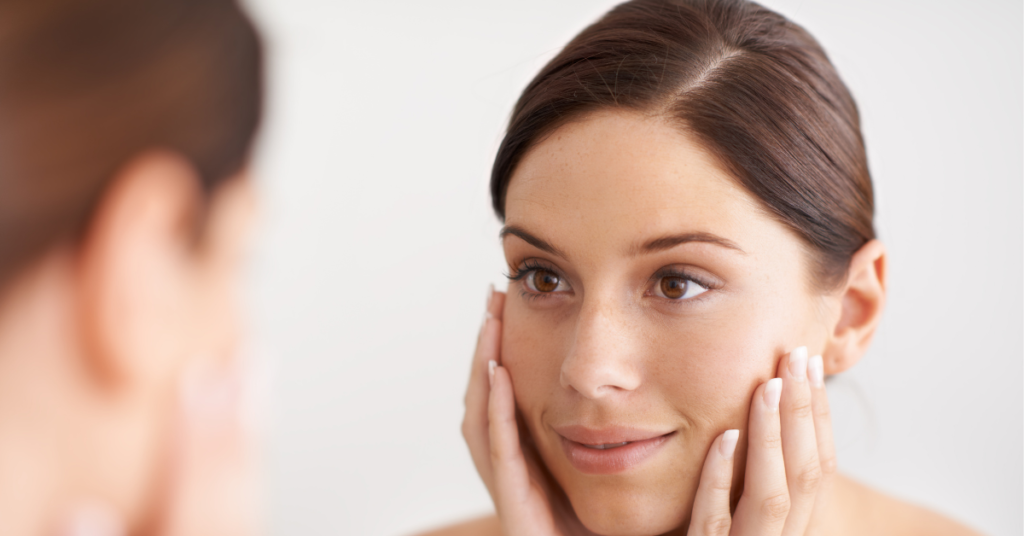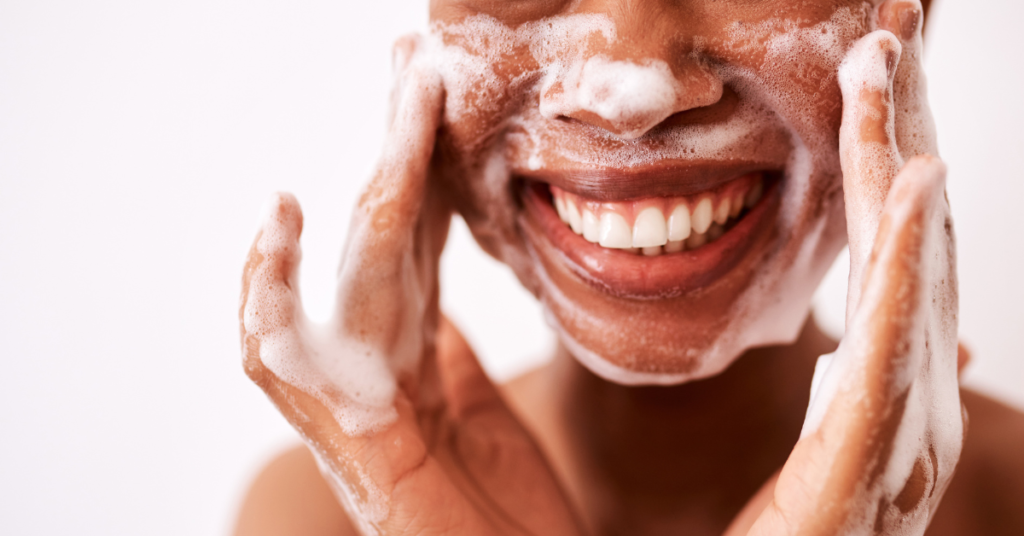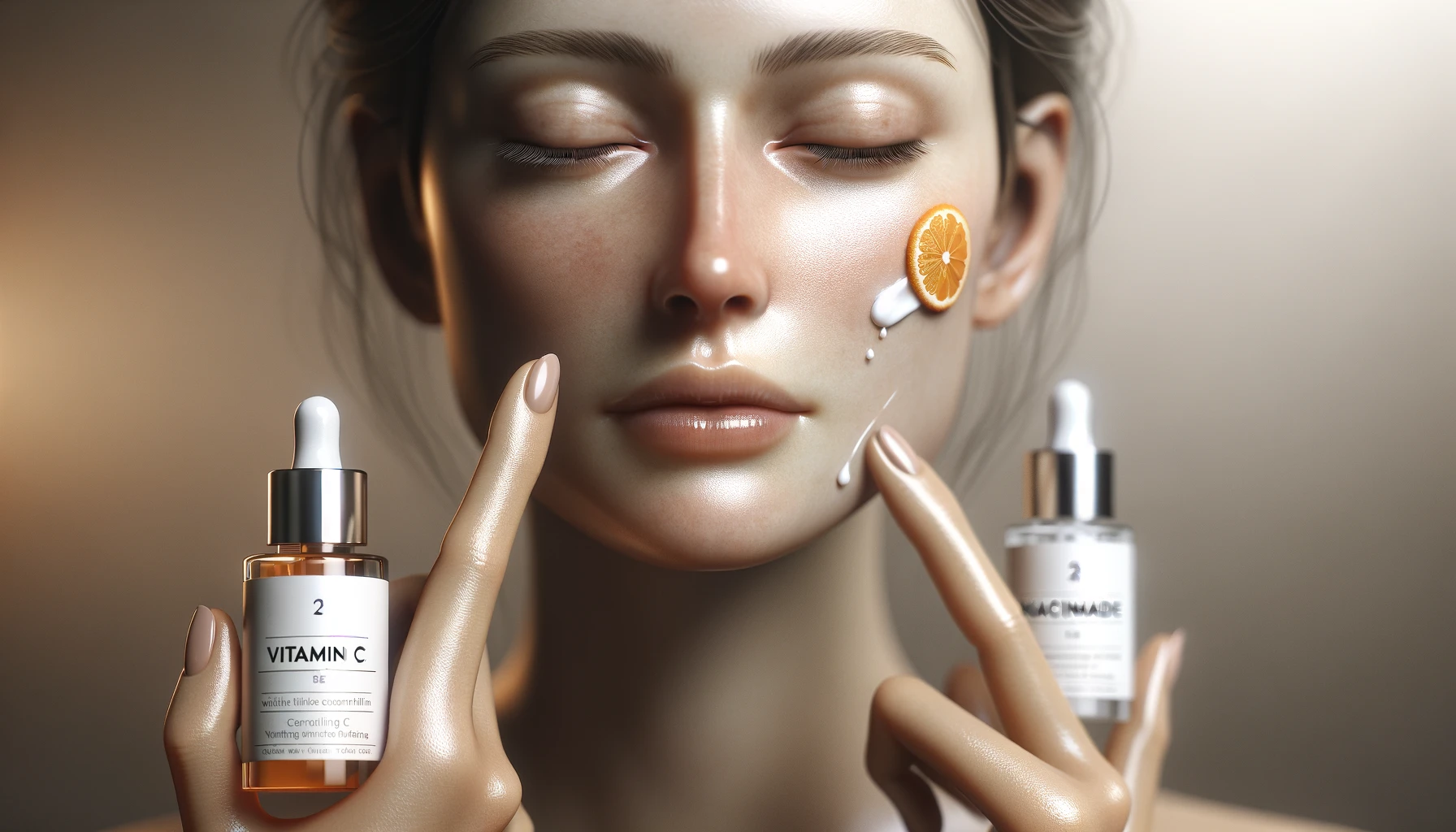In the vast world of skincare, the sheer volume of products can often feel overwhelming. From serums to masks, toners to moisturizers, navigating your way can seem like walking through a maze. Yet, amid this options of products, certain ingredients stand out for their undeniable efficacy. One such product is salicylic acid. Recommended by dermatologists and skincare enthusiasts alike, salicylic acid has firmly established itself as a powerhouse ingredient, especially in cleansers.

Choosing the right cleanser is really important. It’s the first step in a skincare routine, responsible not only for removing the grime of the day but also preparing the skin for subsequent products. Incorporate salicylic acid into this equation, and you’re equipping your skin with a tool designed to combat acne, soothe inflammation, and gently exfoliate dead skin cells.
Whether you’re grappling with oily skin, aiming to alleviate dry patches, or seeking a solution for those stubborn blackheads, there’s likely a salicylic acid cleanser out there tailored for you. This guide will dive deep into the world of salicylic acid cleansers, helping you discover the best options for your unique skin type and concerns. Welcome to your journey towards clearer, healthier skin!
What is Salicylic Acid?
Salicylic acid, a term you’ve probably encountered on various skincare product labels, belongs to a class of substances known as beta hydroxy acids (BHAs). It is derived primarily from the bark of willow trees and has been used for centuries, with historical records indicating its use as an anti-inflammatory agent by ancient civilizations.
At its core, salicylic acid is a potent exfoliant. It works by delving deep into the pores, dislodging the accumulated sebum (oil), dirt, and dead skin cells that can lead to breakouts and a dull complexion. Unlike its cousin, alpha hydroxy acids (AHAs), which are water-soluble and work on the skin’s surface, salicylic acid is oil-soluble. This allows it to penetrate oily skin and unclog pores, making it particularly effective for those prone to acne and blackheads.
Beyond its exfoliating prowess, salicylic acid offers multiple other benefits:
- Anti-Inflammatory Properties: It can soothe inflamed and reddened skin, making it beneficial for conditions like acne and rosacea.
- Oil Regulation: By reducing pore size and unclogging them, salicylic acid can regulate oil production, leading to a balanced complexion.
- Collagen Boost: Regular use of products containing salicylic acid can stimulate collagen production, enhancing skin’s elasticity and youthful appearance.
However, like all active ingredients, salicylic acid should be used judiciously. While it offers a plethora of benefits, it’s crucial to introduce it gradually into your skincare routine and always follow up with a broad-spectrum sunscreen, as it can increase the skin’s sensitivity to the sun.

The Power of Salicylic Acid for Skin Care
As we delve deeper into the realm of skincare, it’s clear that salicylic acid is more than just a buzzword. Its multifaceted benefits have made it a favorite for many, ranging from those with occasional breakouts to individuals battling persistent skin concerns. Let’s unpack the various advantages salicylic acid brings to the table:
1. Combatting Acne:
At the forefront of salicylic acid’s acclaim is its formidable prowess against acne. By exfoliating from within the pore lining, it prevents the clogging that often culminates in acne eruptions. Furthermore, its anti-inflammatory nature helps reduce the redness and swelling of existing pimples, hastening their healing process.
2. Addressing Oily Skin:
If your skin often sports a shiny veneer, salicylic acid could be your savior. By unclogging pores, it helps regulate the production of sebum, ensuring that your skin maintains a matte finish without feeling excessively dry.
3. Revitalizing Dry and Flaky Skin:
It might seem counterintuitive, but salicylic acid isn’t just for oily skin. When used in the right formulations, like certain face washes with salicylic acid, it can slough away flaky skin patches and promote a hydrated, smooth complexion.
4. Soothing Sensitive Skin:
While strong salicylic acid formulations can be irritating to some, there are gentle cleansers with salicylic acid crafted specifically for sensitive skin. These products provide the benefits of BHAs without causing undue irritation.
5. Banishing Blackheads and Whiteheads:
Blackheads and whiteheads, or comedones, are essentially pores clogged with dead skin cells and oil. Salicylic acid’s ability to penetrate and exfoliate these pores makes it a formidable foe for these pesky skin concerns.
6. Enhancing Overall Skin Texture:
Regular use of products, like a salicylic acid daily gentle cleanser, can result in a refined skin texture. By consistently shedding dead skin cells, it paves the way for a radiant and smooth skin surface.
Incorporating salicylic acid into your skincare routine can be a game-changer. However, it’s essential to choose the right product. Whether it’s a salicylic acid body wash or a salicylic acid-based face wash, ensuring it aligns with your skin’s needs will maximize benefits while minimizing potential irritations.

Choosing the Best Salicylic Acid Cleanser for Your Skin Type
Finding the perfect skincare product often requires a nuanced approach, especially when it comes to cleansers with active ingredients. Tailoring your choice of salicylic acid cleanser to your specific skin type can yield the most effective and satisfying results. Here’s a breakdown to guide you:
1. For Oily Skin:
Oily skin can benefit immensely from salicylic acid’s ability to penetrate and unclog pores. Look for a face wash with salicylic acid that’s specially formulated to regulate oil production without over-drying. Recommended options include a 2% salicylic acid cleanser or one that combines both salicylic acid and glycolic acid for a dual exfoliating effect.
La Roche-Posay Effaclar Medicated Gel Cleanser: Known for its dermatologist-approved formulations, this cleanser combines 2% salicylic acid with lipo-hydroxy acid, effectively targeting excess oil and acne.
2. For Dry Skin:
It might come as a surprise, but certain salicylic acid cleansers are hydrating wonders. If you’re battling dryness, opt for formulations that pair salicylic acid with moisturizing agents. Brands like Cerave salicylic acid cleanser strike a balance by exfoliating while also replenishing the skin’s moisture barrier.
CeraVe SA Renewing Cleanser: This product harnesses the benefits of salicylic acid while also containing ceramides and hyaluronic acid. It exfoliates and unclogs pores without compromising on moisture. Still confused? Find out more about CeraVe SA Renewing Cleanser.
3. For Combination Skin:
If your skin can’t decide between being oily or dry, fear not. There are salicylic acid cleansers tailored for combination skin. These formulations aim to balance the skin, addressing oily zones without neglecting drier areas.
Murad Clarifying Cleanser: Offering a time-released salicylic acid formula, this product treats ongoing acne while preventing future breakouts. Its balanced formulation ensures neither excessive dryness nor oiliness.
4. For Acne-Prone Skin:
The best salicylic acid cleanser for acne will have a potent dose of the active ingredient, often combined with other blemish-fighting agents like benzoyl peroxide. It’s also beneficial if the product is non-comedogenic, ensuring it won’t contribute to further breakouts.
Neutrogena Oil-Free Acne Fighting Face Wash: This popular choice combines salicylic acid with other acne-fighting ingredients, providing a comprehensive solution for blemished skin.
5. For Sensitive Skin:
For those with a delicate complexion, a gentle cleanser with salicylic acid is paramount. Search for products labeled as “gentle” or “for sensitive skin”. Additionally, natural face washes with salicylic acid can offer a mild approach to exfoliation without irritating additives.
Paula’s Choice CALM Redness Relief 1% BHA Lotion Exfoliant: While not strictly a cleanser, this exfoliant offers a gentle dose of salicylic acid in a soothing formula. It’s perfect for sensitive skin types looking to introduce BHAs into their routine.
6. Dermatologist-Recommended:
If you’re keen on getting a product that’s backed by experts, seeking out the best salicylic acid face wash dermatologist-recommended is a wise decision. These products often come with a stamp of approval from skin professionals, ensuring their efficacy and safety.
SkinCeuticals LHA Cleansing Gel: This product combines potent ingredients including glycolic acid, salicylic acid, and LHA. It’s a favorite among dermatologists for its effective exfoliation and clarifying properties.
Advantages of Using Salicylic Acid Cleansers
Salicylic acid, a beta hydroxy acid (BHA), has long been lauded in the skincare community for its multifaceted benefits. Derived primarily from the bark of willow trees, this ingredient has made its mark in countless skincare formulations, particularly in cleansers. Here’s a deep dive into the advantages of incorporating a salicylic acid cleanser into your regimen:
1. Deep Pore Cleansing:
Unlike alpha hydroxy acids (AHAs), which are water-soluble, salicylic acid is oil-soluble. This allows it to penetrate more deeply into the sebaceous (oil) glands, clearing out the congestion and reducing the chances of acne breakouts.
2. Exfoliation:
Salicylic acid acts as an exfoliant, helping to slough off the top layer of dead skin cells. This not only results in a brighter complexion but also paves the way for other skincare products to penetrate more effectively.
3. Anti-Inflammatory Properties:
Historically, salicylic acid was used to alleviate pain and reduce fevers. In skincare, it helps reduce the redness and inflammation associated with acne, making blemishes less noticeable.
4. Combatting Blackheads and Whiteheads:
One of the standout features of salicylic acid is its ability to dissolve the type of skin debris that clogs pores and causes blackheads and whiteheads. Over time, consistent use of salicylic acid cleansers can lead to a noticeable reduction in these blemishes.
5. Suitable for Multiple Skin Types:
While particularly beneficial for oily and acne-prone skin, there’s a range of salicylic acid products on the market tailored to various skin types. For instance, there are gentle salicylic acid cleansers for sensitive skin and hydrating formulations for dry skin.
6. Reduces Oil Production:
For those struggling with excessive oiliness, salicylic acid can be a game-changer. By regulating sebum production, it keeps the skin looking matte for longer periods.
Incorporating salicylic acid into your routine is not without its considerations. While it boasts numerous benefits, it’s essential to use this powerhouse ingredient judiciously. Overuse can lead to dryness and irritation, especially if combined with other active ingredients. Always listen to your skin, and consider consulting a dermatologist to tailor a routine that’s perfect for you.

Considerations When Using Salicylic Acid Cleansers
As beneficial as salicylic acid is for the skin, it’s crucial to approach its use with an informed perspective. Here are some considerations to bear in mind when integrating salicylic acid cleansers into your skincare routine:
1. Potential Dryness and Irritation:
While salicylic acid is effective at reducing oil and exfoliating the skin, it can lead to dryness and irritation if used too frequently or in high concentrations. It’s essential to follow up with a hydrating moisturizer and gradually introduce the product to avoid overwhelming the skin.
2. Sun Sensitivity:
Exfoliating agents, including salicylic acid, can make your skin more susceptible to sun damage. It’s imperative to pair salicylic acid products with a broad-spectrum sunscreen of at least SPF 30 during the day.
3. Product Interaction:
Using salicylic acid in conjunction with other active ingredients, like retinoids or vitamin C, might irritate the skin. It’s essential to space out the use of these ingredients or choose formulations specifically designed to be used together.
4. Allergic Reactions:
Though rare, some people might experience allergic reactions to salicylic acid. Symptoms could include itching, redness, or swelling. It’s always recommended to do a patch test when trying out a new product.
5. Not Suitable for Everyone:
Individuals with certain medical conditions or those who are pregnant should avoid salicylic acid unless advised otherwise by a dermatologist or medical professional.
6. Overuse Can Lead to Over-Exfoliation:
While it’s tempting to use salicylic acid products daily to combat persistent acne or oiliness, over-exfoliating can harm the skin’s natural barrier. This can make the skin more susceptible to external irritants, dehydration, and more breakouts.
Understanding the intricacies of salicylic acid ensures that you reap its benefits without inadvertently causing harm to your skin. It’s always a balance of treating concerns while respecting the skin’s natural processes. When in doubt, consulting a skincare professional or dermatologist can provide personalized advice tailored to your skin’s unique needs.

Choosing the Right Salicylic Acid Cleanser for Your Skin Type
Finding the ideal salicylic acid cleanser involves understanding your skin’s unique needs. With the myriad of options available, it can be a daunting task to select the perfect one. To simplify the process, here’s a guide based on various skin types:
1. Oily Skin:
Best Choice: High Salicylic Acid Face Wash
For those with an oily complexion, a face wash with a slightly higher concentration of salicylic acid can effectively regulate sebum production. Opt for products labeled as “oil-control” or “mattifying.”
Recommended Product: Face Wash with Glycolic and Salicylic Acid. Combining these two acids can enhance exfoliation and tackle excessive oiliness more effectively.
2. Dry Skin:
Best Choice: Gentle Salicylic Acid Cleanser for Sensitive Skin
Dry skin types should prioritize formulations that incorporate moisturizing ingredients alongside salicylic acid to ensure the skin remains hydrated.
Recommended Product: CeraVe Salicylic Acid Cleanser. Known for its hydrating ingredients like ceramides, this cleanser exfoliates while maintaining the skin’s moisture barrier.
3. Combination Skin:
Best Choice: 2% Salicylic Acid Cleanser
A moderate concentration of salicylic acid is ideal for combination skin, addressing both oily and dry areas effectively.
Recommended Product: La Roche-Posay Salicylic Acid Face Wash. This cleanser strikes a balance, ensuring thorough cleansing without over-drying any part of the face.
4. Acne-Prone Skin:
Best Choice: Medicated Salicylic Acid Face Wash
A medicated formulation can target acne-causing bacteria while the salicylic acid unclogs pores.
Recommended Product: Face Wash with Salicylic Acid and Benzoyl Peroxide. The combination can be potent for reducing acne breakouts, but ensure you follow up with a non-comedogenic moisturizer.
5. Sensitive Skin:
Best Choice: Best Salicylic Acid Cleanser for Sensitive Skin
Opt for a cleanser labeled as “gentle” and “for sensitive skin” to ensure minimal irritation.
Recommended Product: Natural Face Cleanser with Salicylic Acid. Natural formulations tend to be gentler on the skin while still offering the benefits of salicylic acid.
Conclusion: The Power of Salicylic Acid in Your Skincare Routine
Salicylic acid has firmly established its place in the pantheon of effective skincare ingredients. Renowned for its ability to unclog pores, combat acne, and refine the skin’s texture, it’s a must-have for many seeking a clearer and more radiant complexion.
Choosing the right salicylic acid cleanser is about more than just grabbing the first product off the shelf. It’s a journey of understanding your skin type, recognizing what your skin needs, and then matching those needs with the best product formulations available.
Here’s a quick recap of what we’ve covered:
- Benefits of Salicylic Acid: From its exfoliating prowess to its anti-inflammatory properties, salicylic acid offers numerous benefits that make it a favorite among skincare enthusiasts.
- Considerations When Using: Like all potent skincare ingredients, salicylic acid requires a balanced approach. Ensuring you don’t over-exfoliate and always protecting your skin from potential sun damage are critical.
- Choosing Based on Skin Type: Oily, dry, combination, acne-prone, or sensitive – every skin type has a salicylic acid cleanser that can potentially benefit it. Brands like CeraVe and La Roche-Posay offer products that cater to these varied needs.
- FAQs: Always ensure you’re well-informed. Whether it’s about daily usage, combining products, or selecting non-comedogenic options, knowledge can empower your skincare journey.
Incorporating salicylic acid into your regimen can be transformative. However, always remember that skincare is deeply personal. What works wonders for one person might not be as effective for another. It’s all about trial, understanding, and sometimes, a bit of patience.
To truly unlock the potential of salicylic acid or any skincare ingredient, it’s beneficial to engage in ongoing research, seek out trusted reviews, and when necessary, consult with dermatological professionals. Here’s to clearer, more radiant skin and the joy of finding products that truly resonate with your skincare goals!
(FAQs)About Salicylic Acid Cleansers
Navigating the world of skincare, with its vast range of products and ingredients, can sometimes be overwhelming. To further assist you in making informed choices about salicylic acid cleansers, let’s address some commonly asked questions:
1. What is the best cleanser that has salicylic acid?
While the “best” cleanser is subjective and depends on individual skin needs, many dermatologists recommend products from reputable brands like CeraVe, La Roche-Posay, and Neutrogena. The La Roche-Posay Salicylic Acid Face Wash and CeraVe Salicylic Acid Cleanser have garnered positive reviews for their efficacy and gentle formulations.
2. Is it OK to use salicylic acid cleanser everyday?
For most people, daily use can be beneficial, especially if they have oily or acne-prone skin. However, if you notice signs of dryness or irritation, consider reducing usage to every other day or a few times a week. Always follow up with a moisturizer to maintain skin hydration.
3. What is a non-pore clogging salicylic acid cleanser?
Non-pore clogging products are often labeled as “non-comedogenic.” The CeraVe Salicylic Acid Cleanser is an excellent example, designed to exfoliate and cleanse without causing breakouts.
4. What type of salicylic acid is best for acne?
For acne-prone skin, a 2% salicylic acid formulation is often recommended. This concentration is potent enough to unclog pores and reduce acne but gentle enough for daily use. Cleansers that combine salicylic acid with benzoyl peroxide or niacinamide can offer enhanced acne-fighting benefits.
5. Can I use a salicylic acid cleanser with other skincare products?
Absolutely! However, be cautious when combining with other potent actives like retinoids or vitamin C. It’s essential to space out their usage, use them on alternate days, or consult a dermatologist for a tailored skincare routine.



